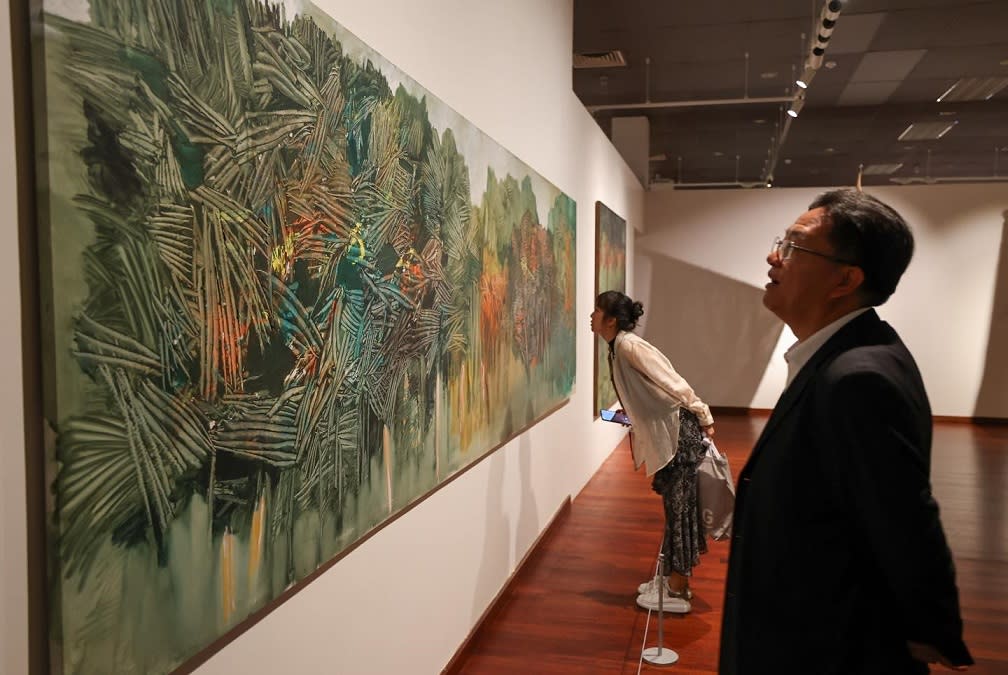‘Don’t ignore creative arts’ impact on economy, education, and tourism’

Visual arts education, mainly painting and drawing, have been part of the school curriculum since pre-war Malaya but are not accorded the same priority and emphasis as the sciences and the arts (History, Geography, languages, et cetera) subjects.
Dance, music and drama were relegated to co-curricular activities as they are not considered academic subjects. Even then, not all schools have such activities.
Today, visual arts is an optional subject in the school curriculum.
Although the visual arts were part of the school curriculum, they were not included as a discipline in the pioneering University Malaya, initially in Singapore and later established in Kuala Lumpur.
The establishment of the second national university – Universiti Pulau Pinang in 1969 (later renamed Universiti Sains Malaysia) – saw formal courses in the creative arts incorporated into the university’s degree programmes.
It was the initiative of the first vice-chancellor, Tan Sri Hamzah Sendut, a proactive, innovative, and forward-looking intellectual vice-chancellor with a keen mind.
The School of Humanities programmes absorbed the performing and visual arts as separate entities. Graduates receive humanities degrees, specialising in their respective disciplines.
As the enrolment in these two programmes increased, the need to expand the curriculum to include a comprehensive range of courses that address the various facets of theory and practice of creative arts necessitated a separate independent entity unconstrained by the rubric of the School of Humanities.
The Arts Centre was established in 1984, encompassing the performing and visual arts and later expanding to include music. I was appointed the first director of the Arts Centre.
As part of its outreach programme to give talented artists (actors, dancers, traditional musicians, and visual artists) who do not have the necessary qualifications to qualify for enrolment in the creative arts degree programmes, the Arts Centre, Universiti Sains Malaysia, in collaboration with the then Culture, Youth and Sports Ministry, established the one-year Creative Arts Certificate programme.
The objective was to provide opportunities for traditional and contemporary arts practitioners to develop their talents.
They completed a specialised programme that included theory and practice courses. After finishing this programme and receiving the Creative Arts certificate, they could pursue a performing or visual arts degree.
This creative arts certificate programme was the precursor of the National Arts Academy or Akademi Seni Kebangsaan (now known as Akademi Seni Budaya dan Warisan Kebangsaan) of the Culture, Arts and Tourism Ministry in 1994, offering diploma programmes focusing on performance practice.
In 2001, it became an arts university under the purview of the Culture Ministry but not part of the Higher Education Ministry.
Since the pioneering creative arts programme at USM, other universities subsequently established Arts Departments or Faculties or Arts Schools as part of their course offerings.
Many creative arts programs provide a broad education that involves a primary area of focus, an optional secondary area, and mandatory university courses for graduation. Due to limited formal instruction in creative arts subjects in schools, most programmes, except Western music, start from the basics.
Whereas university courses in the other disciplines – the arts and sciences – are taught at a much higher advanced level because students have had a strong foundation, having learnt them throughout the primary and secondary school years.
The bane of creative arts courses is having to conduct beginner’s courses level to teach the fundamentals of dance, music, and theatre. The result is that the universities produce graduates with general theoretical and practical knowledge with a minimal concentration in their respective crafts.
They do not make much impact on the arts scene, and there is no infrastructure to create excellent performers. There is, therefore, a dire need to establish a conservatory of arts (performing and visual arts) to develop virtuoso performers and visual artists par excellence.
For so long, policymakers and educationists have not attached much value to the arts and regard them as entertainment or relaxation activities, oblivious to the aesthetic, cultural, economic, and educative benefits of the arts in nation-building.
The arts have been sidelined and accorded the lowest priority in the social and educative sphere. That is one of the reasons why the government placed the arts as subservient to tourism in the said ministry.
The myopic perception of politicians and policymakers is that the arts are to serve as tourism products.
Arts and culture should have had a separate ministry and reclaim its original Departments of Museum, Archives and National Library, which were transferred to the National Unity Ministry to justify its existence.
The creative arts should receive recognition as an integral part of national development linked to the economy, education, and tourism towards the realisation of a culturally literate society and the development of professional performing virtuosos and visual artists par excellence in vibrant artistic scenes and enclaves.
The views expressed here are the personal opinion of the writer and do not necessarily represent that of Twentytwo13.
Main image: Representatives from Yunnan Minzu University, China taking a closer look at an art piece at Balai Seni Negara, Kuala Lumpur on May 29, 2024. Image: Balai Seni Negara.
The post ‘Don’t ignore creative arts’ impact on economy, education, and tourism’ appeared first on Twentytwo13.


